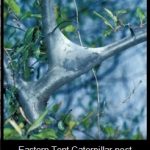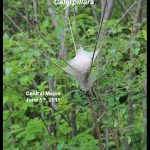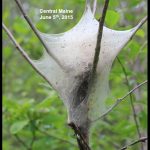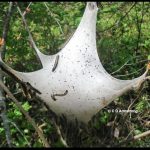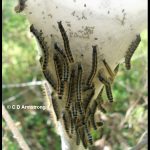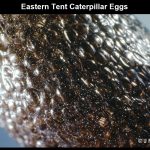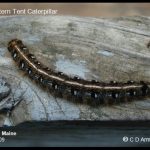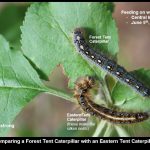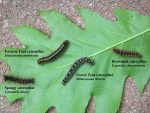Eastern Tent Caterpillars
The silken/webbed nests spun by Eastern Tent Caterpillars start to be seen in trees in Maine typically beginning in early May. These caterpillars feed on ash, apple, peach, plum, crabapple, cherry trees, to name but a few, and build distinctive nests in the forks of the branches. Feel free to review our Eastern Tent Caterpillars publication about these caterpillars for more information, including some things you can do to combat them. Below you’ll also find a few more helpful resources about this insect.
- Eastern Tent Moth (Malacosoma americana) (Etna, ME; 6/29/2022)
- A nest of Eastern Tent caterpillars
- A nest of Eastern Tent caterpillars
- Closer view of the caterpillar nest shown in the adjacent photo
- A nest of Eastern Tent Caterpillars (Mid-May, 2012; Aurora, ME)
- Closer view of the bottom of the nest shown in the adjacent photo
- Eastern Tent Caterpillar (egg masses)
- Closeup view of an Eastern Tent Caterpillar egg mass
- A mature Eastern Tent Caterpillar (Central Maine: June 5th, 2015)
- A mature Eastern Tent Caterpillar (Central Maine: June 24th)
- Comparing the Eastern Tent Caterpillar (bottom) with a Forest Tent Caterpillar (above). Both were feeding on the leaves of a wild apple tree. The Eastern tent caterpillars make silken nests in the forks of their host trees whereas the forest tent caterpillars make no nests at all, in spite of having “tent” in their name (Etna, ME; 6/5/2015)
- Comparison of four different caterpillar species in Maine that are sometimes difficult for people to differentiate, and oak is one of the hosts they all have in common (Photographed: central Maine; 6/12/2022) (Eastern Tent caterpillar, Spongy caterpillar, Forest Tent caterpillar, and the Browntail caterpillar)
Additional Information:
- Eastern Tent Caterpillar (Penn State)
- For horse owners: Mare Reproductive Loss Syndrome (The International Journal of Applied Research in Veterinary Medicine)


